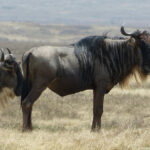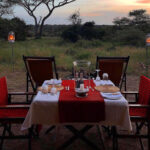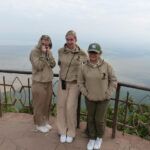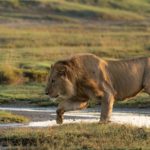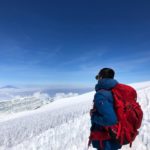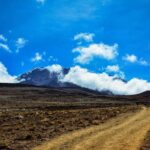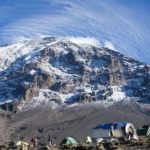Tanzania Safari Packing List: Clothing Essentials
When planning your clothing for a Tanzanian safari, it’s important to consider the unique conditions you’ll face. Lightweight, breathable fabrics like cotton and linen are ideal. They allow your skin to breathe and reduce sweating under the African sun. Opt for long sleeves and pants to protect against sunburn and insect bites. This will keep you comfortable during daytime excursions.
Layering is crucial as temperatures can vary significantly between day and night. Mornings and evenings can be quite chilly, while midday temperatures soar. Pack a mix of t-shirts, long-sleeve shirts, and a fleece jacket. This way, you can easily adjust your outfit to stay comfortable. Remember, early morning game drives can be particularly cold.
The colors and fabrics you choose are also important. Neutral tones like khaki, beige, and olive help you blend into the natural environment. Bright colors can disturb wildlife and attract insects. Avoid wearing white as it can get dirty easily. Dark colors like black and blue should also be avoided as they attract Tsetse flies.
Comfortable and sturdy footwear is vital. Hiking boots or sturdy sneakers are recommended for walking safaris and uneven terrain. Sandals can be worn around the camp, but they aren’t suitable for game drives or walks. Ensure your shoes are well-worn to prevent blisters. Pair them with moisture-wicking socks for added comfort.
What to Wear on Safari: From Headgear to Footwear
When selecting headgear for a safari, choose a wide-brimmed hat. This shields you from the strong African sun. It’s also useful for keeping insects away from your face. A hat with a chin strap is ideal to prevent it from blowing away. Sunglasses with UV protection are a must to protect your eyes.
For your upper body, lightweight and long-sleeved shirts are perfect. They protect your skin from sunburn and insects. A few short-sleeved shirts can be packed for hotter days. Consider moisture-wicking materials to stay cool. Neutral colors are recommended to blend with the environment.
When it comes to pants, durable and comfortable options are essential. Cargo pants with several pockets are convenient for carrying essentials. Convertible pants that turn into shorts can be a versatile choice. Ensure they are made of breathable fabric. Remember to avoid bright colors to not disturb the wildlife.
Footwear is critical for a safari adventure, so pack accordingly. Sturdy hiking boots or trail shoes are best. They provide support and protect your feet on uneven terrain. Comfortable sandals can be worn around the camp. Bring a pair of moisture-wicking socks for added comfort during hikes.
Layering for Varying Climates: Daytime Heat and Chilly Evenings
Layering your clothing is crucial for handling the fluctuating temperatures on a Tanzanian safari. The day can start with a chill, warm up significantly, and cool down again in the evening. Different layers allow you to adjust your outfit easily. A lightweight base layer can wick moisture away. Adding layers helps you stay comfortable throughout the day.
Begin with a lightweight, moisture-wicking t-shirt as your base layer. This will keep you cool by drawing sweat away from your body. As the temperature drops, put on a long-sleeved shirt or a fleece. This additional layer provides warmth without being too bulky. Always have a comfortable and breathable layer next to your skin.
For colder mornings and evenings, a light jacket or windbreaker is essential. These can easily be taken off when the day warms up. A compact, packable jacket is perfect as it doesn’t take up much space in your bag. The jacket should be wind-resistant and water-repellent. This ensures you stay dry and comfortable in varying weather conditions.
When selecting your bottoms, opt for convertible pants. These pants can transform into shorts, which is ideal for mid-day heat. Layering them with thermal leggings can keep you warm during cooler periods. This versatility means you won’t overpack while still being prepared. Comfort and practicality should be your guiding principles.
Colors and Fabrics Suited for Safari: Blending with Nature
Choosing the right colors and fabrics for your safari is essential for blending with nature and staying comfortable. Neutral colors like khaki, beige, and olive green are best. These shades make you less visible to wildlife, allowing you to observe them closely. Bright colors can startle animals and attract unwanted attention. The goal is to blend seamlessly with the surroundings.
The fabrics you choose are just as important as the colors. Lightweight and breathable materials like cotton and linen are ideal. They help keep you cool in the hot African sun. These fabrics are also comfortable and easy to wash in camp. Avoid synthetic materials that can cause overheating and discomfort.
Earth tones not only help you blend in but also hide dirt and stains better than lighter colors. This is particularly useful when you are spending multiple days in the wild. Safari clothes are exposed to dust, mud, and sweat. Wearing earth tones ensures you look presentable throughout your trip.
During the cooler evenings, opt for fabrics that provide warmth without being too heavy. Fleece and lightweight wool are good choices for layering. These materials trap heat and keep you warm as temperatures drop. But they can easily be removed when it warms up. This versatility in your clothing will be invaluable.
Avoid wearing black and blue colors, especially in areas where Tsetse flies are common. These insects are attracted to dark colors and can bite through clothing. Sticking to neutral tones not only keeps you safer but more comfortable as well. Your comfort will directly impact your overall safari experience.
Gadgets and Essentials for a Tanzanian Safari with Rolux Safaris & Trekking
When heading on a Tanzanian safari, there are a few gadgets and essentials you must bring. A high-quality camera is crucial for capturing stunning wildlife moments. Rolux Safaris & Trekking ensures you experience breathtaking views, so you don’t want to miss a thing. Binoculars are another essential for spotting distant animals. Compact and lightweight binoculars will be easy to carry around.
A reliable flashlight or headlamp is necessary for navigating in low-light conditions. This is particularly useful when you’re moving around the camp at night. Pack extra batteries or a portable charger to ensure your gadgets stay powered. Having a power bank will keep your devices charged, especially on long game drives. Rolux Safaris typically offer charging stations, but it’s best to be prepared.
Water bottles with built-in filters are advisable for staying hydrated. Clean drinking water is a must, and a filter bottle ensures you always have access to it. In addition to hydration, carrying a multi-tool can be incredibly handy. Whether you need to cut rope or open a can, a multi-tool is versatile. Rolux Safaris provides a safe environment, but self-sufficiency is always a plus.
It’s important to bring a small first aid kit for minor injuries. This should include bandages, antiseptics, and any personal medications. Rolux Safaris & Trekking guides are well-trained in first aid, but having your own supplies is advantageous. Sun protection is another key aspect, so pack sunscreen and lip balm with SPF. These items will protect your skin from the harsh African sun.
Finally, don’t forget to carry a detailed map and a reliable GPS device. While Rolux Safaris & Trekking provides expert guides, having your navigation tools is smart. It gives you a greater sense of independence and security. Mark important spots and be aware of your surroundings. Enjoy your safari but stay oriented at all times.
What to Pack for Safari – My Packing List
Conclusion
Embarking on a Tanzanian safari is an adventure of a lifetime. Packing the right clothing, gadgets, and essentials ensures a comfortable and enjoyable experience. Neutral-colored clothing helps you blend in, while essential gadgets like cameras and binoculars enhance your wildlife viewing.
Don’t forget practical items like a multi-tool and a first aid kit for safety. Being prepared with navigation tools adds an extra layer of confidence. With the right preparation, your safari with Rolux Safaris & Trekking will be unforgettable.

